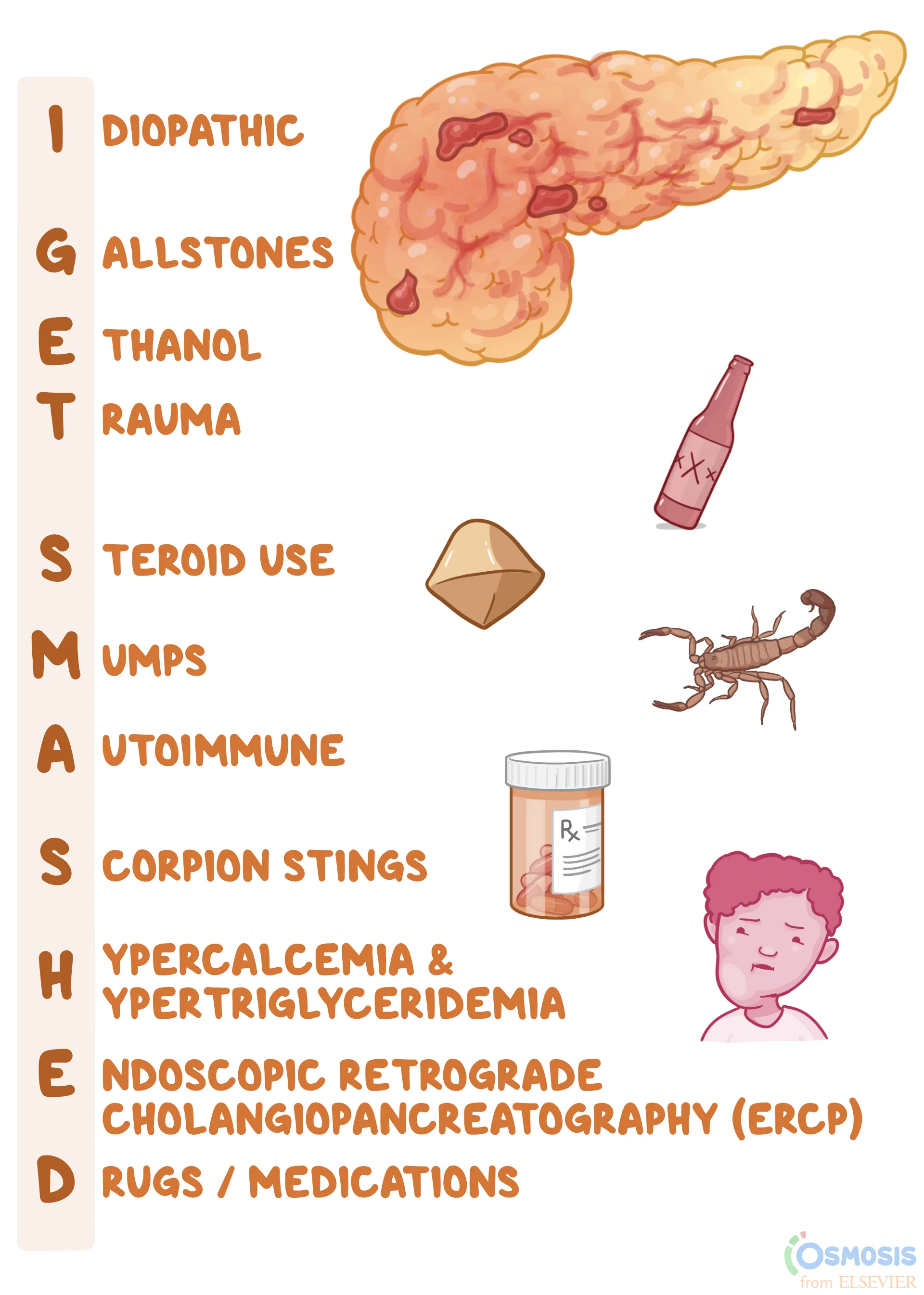Not an infective cause
Acute damage can be temporary and can restore function
Chronic Pancreatitis results in fibrosis and reduced function. Alcohol is the most common cause.

- Mild - swollen gland with fat necrosis
- Severe - swollen, necrotic gland and haemorrhage (Grey Turner’s and Cullen’s sign)
- Pseudocysts (full of pancreatic juice)
- Drugs - Furosemide, Thiazide diuretics, azathioprine
Causes/Factors
Gallstones (50%), alcohol (25%), idiopathic (10%)
Symptoms
- Epigastric pain (radiating to back)
- N+V
- Jaundice if due to gallstones
Signs
- Grey-Turner’s (remember by “you turn on your side”) sign/Cullen’s sign
Glasgow Score
Used to assess the severity of Pancreatitis.
- 0 or 1 – mild Pancreatitis
- 2 – moderate Pancreatitis
- 3 or more – severe Pancreatitis
Diagnostic Tests
- Bloods: WCC, CRP, deranged LFTs, amylase, (lipase expensive test), U&Es, calcium
- USS - to access for gallstones
- CTAP - necrossi, abscesses and fluid collection
Amylase raised more than 3x the normal limit indicates an acute Pancreatitis
Lipase is more sensitive and specific than amylase for Pancreatitis
Management
Acute
- Resus ABCDE
- IV fluids
- Nil by mouth
- Treatment of gallstones (ERCP)
- Antibiotics if abscess
- Analgesia
Chronic
- Abstinence from alcohol and smoking
- Analgesia
- Replacement of pancreatic enzymes (Creon must be taken with meals). Otherwise fat, greasy stools + deficiency in fat soluble vitamins
- ERCP with stenting
Complications/red Flags
Acute
- Persistent Hypocalcaemia poor prognostic sign
- Necrosis of pancreas
- Pseudocyst can develop 4 weeks after
- Chronic Pancreatitis